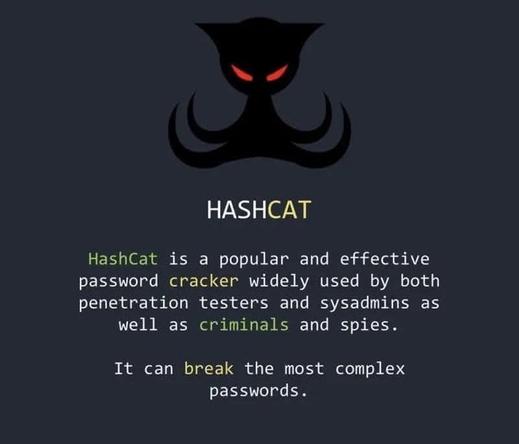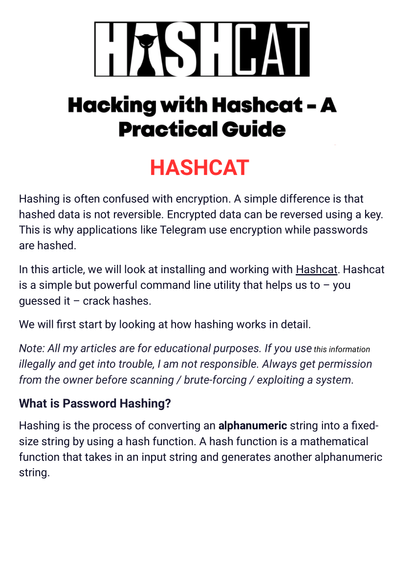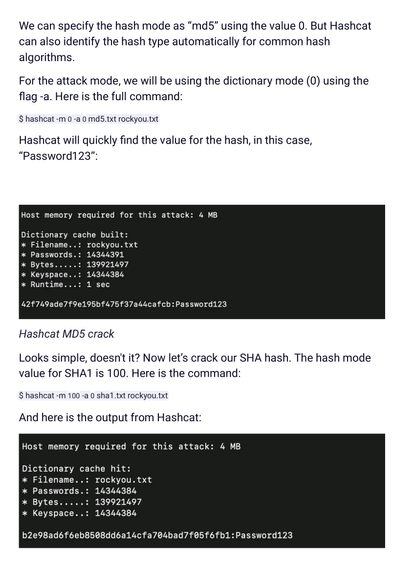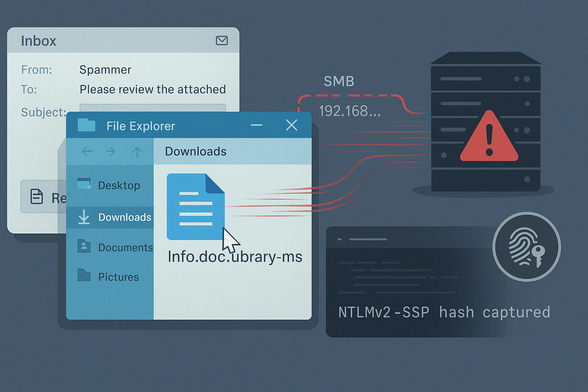🐈⬛ Hashcat – A Practical Guide to Password Auditing
Hashcat is a powerful GPU-accelerated password recovery tool used by security professionals to test the strength of passwords in authorized environments.
🧠 What Hashcat is used for:
• Auditing password hashes (e.g., from Windows, Linux, web apps)
• Testing password policies and complexity
• Identifying weak or reused credentials in simulated lab setups
🔐 Key Features:
• Supports a wide variety of hash types (MD5, SHA1, NTLM, bcrypt, etc.)
• Multiple attack modes: dictionary, brute-force, mask, hybrid, rule-based
• Highly customizable and efficient with GPU acceleration
• Works well for red teamers and defenders validating password hygiene
🎯 When to use it:
• During penetration tests (with permission)
• In password policy assessments
• For internal security audits and training exercises
Disclaimer: This guide is for educational and ethical use only. Only audit password hashes on systems you own or have explicit authorization to test.
#Hashcat #CyberSecurity #PasswordAuditing #EthicalHacking #InfoSec #EducationOnly #RedTeamTools #CredentialSecurity #GPUCracking #SecurityAssessment




